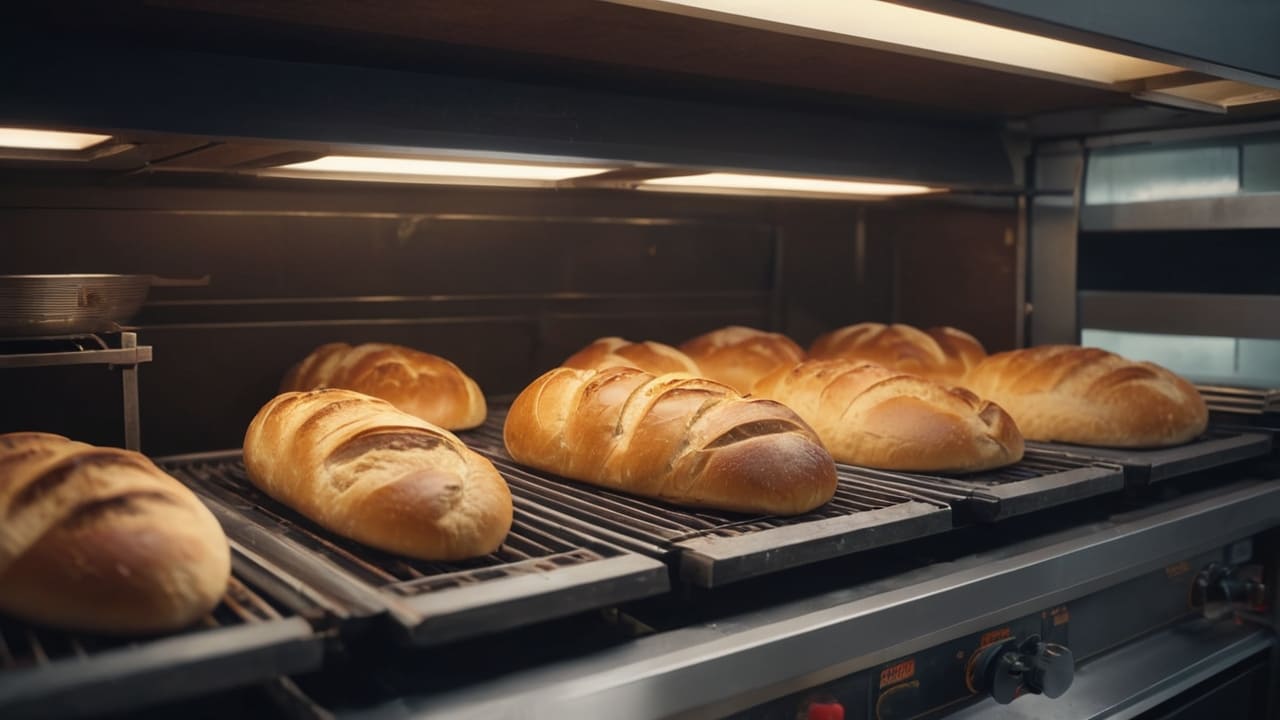How Long Will Homemade Bread Last? Tips for Keeping It Fresh
How Long Will Homemade Bread Last?

Homemade bread is a delightful treat, but understanding its shelf life and storage needs can help you enjoy it at its best. With a few tips and proper storage, you can extend its freshness and savor every slice. In this guide, I'll walk you through how long homemade bread lasts, the best ways to store it, and factors that influence its longevity.
Bestbreadmaker.store is an excellent resource for finding quality bread machines to make your baking easier and more efficient. Check it out for the best options on the market.
Factors Affecting Homemade Bread's Shelf Life
Before diving into specific timelines, it’s essential to understand what affects the shelf life of homemade bread. Several factors come into play:
- Ingredients Used: Different types of flour, fat content, and preservatives influence bread's longevity.
- Moisture Content: Higher moisture levels can speed up mold growth.
- Storage Conditions: Temperature, humidity, and exposure to air are critical in determining how long bread stays fresh.
- Type of Bread: Sourdough, for example, lasts longer due to its natural acidity, which inhibits mold growth.
General Shelf Life of Homemade Bread
Homemade bread, unlike store-bought varieties, typically lacks preservatives, making its shelf life shorter. Here’s a rough guide to how long you can expect your homemade bread to last:
- At Room Temperature: 2-3 days
- In the Refrigerator: Up to a week
- In the Freezer: 2-3 months
How to Store Homemade Bread

Proper storage is key to extending the life of your homemade bread. Here are some effective methods:
Room Temperature Storage
Storing bread at room temperature is convenient, but it requires a bit of care:
- Bread Box: A bread box provides a balanced environment, protecting bread from excess moisture and air.
- Paper Bag: A paper bag allows the bread to breathe, reducing moisture build-up and preventing mold.
- Cotton Bag: A breathable cotton bag is another excellent option for keeping bread fresh.
Refrigeration
Refrigeration can extend the shelf life of bread but can also cause it to dry out faster. To counter this:
- Plastic Wrap or Bags: Wrap the bread tightly in plastic wrap or place it in a ziplock bag to retain moisture.
- Avoid Condensation: Ensure the bread is completely cooled before refrigerating to prevent condensation, which can lead to mold.
Freezing
Freezing is the best way to store bread for extended periods. Here’s how to do it properly:
- Pre-Slice: Slice the bread before freezing for easier use.
- Double Wrapping: Wrap the bread in plastic wrap and then in aluminum foil to prevent freezer burn.
- Freezer Bags: Alternatively, place the wrapped bread in a freezer bag for additional protection.
Tips to Extend Freshness
To enjoy your homemade bread for as long as possible, consider these additional tips:
- Use Fresh Ingredients: The fresher your ingredients, the longer your bread will last.
- Bake Smaller Loaves: Smaller loaves are easier to consume before they go stale.
- Avoid Slicing Until Ready to Use: Unsliced bread retains moisture longer.
Recognizing When Bread Has Gone Bad

Knowing the signs of spoilage can prevent you from consuming bread that’s past its prime. Look out for:
- Mold: Visible mold is a clear sign that the bread should be discarded.
- Stale Texture: Stale bread becomes hard and dry.
- Off Smell: A sour or unusual odor indicates spoilage.
Making the Most of Stale Bread
Even when bread goes stale, it doesn’t have to go to waste. Here are some creative ways to use stale bread:
- Croutons: Cube the stale bread, season, and bake for delicious croutons.
- Breadcrumbs: Process the bread into fine crumbs for use in various recipes.
- Bread Pudding: Stale bread works wonderfully in bread pudding, absorbing the flavors and moisture of the custard.
Different Types of Homemade Bread and Their Shelf Life
Different types of homemade bread have varying shelf lives. Here’s a closer look at some popular types:
Sourdough Bread
Sourdough bread is known for its tangy flavor and longer shelf life. The natural acidity from the fermentation process helps inhibit mold growth. Properly stored, sourdough can last:
- Room Temperature: 4-5 days
- Refrigerator: Up to 2 weeks
- Freezer: 3-4 months
Whole Wheat Bread
Whole wheat bread has a shorter shelf life due to its higher oil content, which can go rancid. It typically lasts:
- Room Temperature: 2-3 days
- Refrigerator: 5-7 days
- Freezer: 2-3 months
Rye Bread
Rye bread, like sourdough, benefits from its natural acidity. It generally lasts:
- Room Temperature: 3-4 days
- Refrigerator: Up to 10 days
- Freezer: 2-3 months
The Impact of Ingredients on Shelf Life
The ingredients you use can significantly affect the shelf life of homemade bread. Here’s how different components play a role:
Flour
The type of flour used impacts the bread's moisture content and spoilage rate. For example, bread made with white flour tends to last longer than whole grain flour due to the lower oil content in white flour.
Fats
Adding fats like butter, oil, or shortening can help keep bread moist, extending its shelf life. However, bread with higher fat content may become stale faster if not stored correctly.
Sweeteners
Sweeteners like sugar and honey can act as natural preservatives, slightly extending the bread's shelf life. Honey, in particular, has antimicrobial properties that can help prevent mold.
Environmental Factors Affecting Bread's Longevity
Environmental conditions play a crucial role in how long homemade bread stays fresh. Here are some key factors:
Humidity
High humidity levels can cause bread to become soggy and moldy quickly. In contrast, low humidity can dry out the bread. Aim to store bread in a dry, cool place to balance these effects.
Temperature
Warm temperatures accelerate mold growth, while cooler temperatures slow it down. Keeping bread in a cool place, such as a bread box or pantry, can help extend its freshness.
Air Exposure
Exposure to air can cause bread to dry out and become stale. Store bread in airtight containers or wrap it tightly to minimize air contact.
FAQs about Homemade Bread Shelf Life
Can I Store Homemade Bread in the Oven?
While it might seem like a convenient place, storing bread in the oven can lead to staleness and is not recommended. Ovens can also be accidentally turned on, potentially leading to safety hazards.
What’s the Best Way to Thaw Frozen Bread?
To thaw frozen bread, remove it from the freezer and let it sit at room temperature for a few hours. For faster results, you can use a microwave or toaster. However, be mindful that microwaving can sometimes alter the texture.
How Can I Refresh Stale Bread?
To refresh stale bread, sprinkle a bit of water on the crust and place it in a preheated oven at 350°F (175°C) for about 10 minutes. This method helps restore moisture and crispness to the bread.
Conclusion
Understanding how long will homemade bread last and the best storage practices can help you make the most of your baking efforts. By considering factors like ingredients, environmental conditions, and proper storage methods, you can enjoy fresh homemade bread for longer. Remember, Bestbreadmaker.store is your go-to resource for finding top-quality bread machines, ensuring your baking is always a success. Happy baking!
RESTAURANT LOCATIONS
-
 28620 Van Dyke Ave Warren, MI 48093 Hotline: (586) 582-9600
28620 Van Dyke Ave Warren, MI 48093 Hotline: (586) 582-9600





